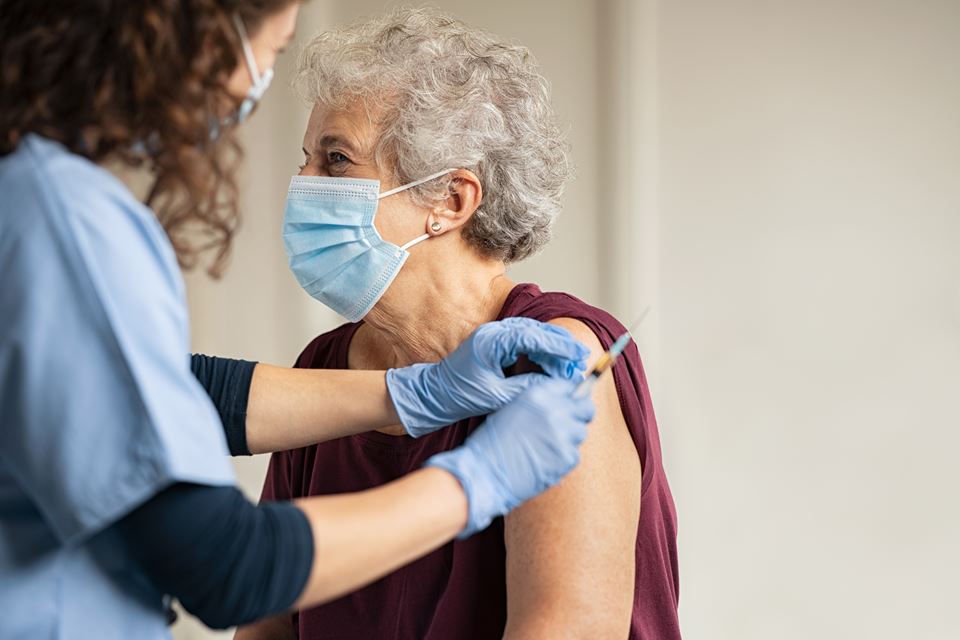In a recent survey, 24 percent of Norwegian nurses said that they do not want to be vaccinated against Covid-19. This is a high number, especially considering that these are healthcare personnel, and there is every reason to believe that it will not be lower among the general population.
SINTEF researchers Sven Even Borgos and Sjoerd Hak both have their backgrounds in biophysics and biotechnology, specialising in nanomedicines and analytical chemistry. Both are currently working with mRNA medications, and are participating in the development of an mRNA vaccine against the most aggressive form of breast cancer. Gemini sat them down for a chat about the new vaccines.
“One thing we can be absolutely sure about is that the clinical tests of these vaccines have been no less extensive or thorough than other vaccine testing programmes”, says Borgos, and goes on to explain.
“All vaccines go through testing programmes. Initially, they are tested on animals, so-called pre clinical trials. Then they are tested on people – firstly on healthy volunteers. If all goes well, the trials continue into phase two. Here, safety is paramount. If no negative side effects are detected, testing passes into the final phase, which entails measuring the vaccine’s therapeutic effect on a large sample of people.
However, what distinguishes many of the most promising vaccines is the application of new mRNA technology, based on the viral genes. mRNA is a promising technology in many medical fields, including the aforementioned cancer treatments.
No shortcuts
“Vaccine testing has been carried out by the book and not a single shortcut has been taken”, says Borgos. “For example, the final trials of the Pfizer’s Covid-19 vaccine were carried out on 44,000 people”, he says.
Half of them were given the active vaccine, and the other half saltwater, a so-called placebo, for comparison. Neither the patients nor those who carried out the vaccinations knew who was getting the placebo shots. This is a so-called double blind, randomised trial, which represents the gold standard when it comes to medication testing.
Nevertheless, the fact that it has taken an extremely short time to develop this and many other vaccines is the result of many factors coming together.
“Firstly, the mRNA vaccines are entirely synthetic. This inherently makes the manufacturing, testing and optimisation processes very rapid”, says Borgos. “Moreover, all the agencies involved in the approval of the vaccine have been working very closely with the manufacturers throughout the development process and have received and evaluated data on a continuous basis as soon as they have become available. This has allowed all approvals and formal processes to be completed much more quickly than normal”, he says.
What are side effects, really?
The Pfizer vaccine is designed to be administered in two doses, 21 days apart. During the trials, about half of those who were given the vaccine said that they experienced swelling and sensitivity around the injection site, a mild fever and headaches. Others experienced symptoms of fatigue. These symptoms occurred mostly during the first days after the second dose. Such observations are typical for most vaccines.
“And so there is the difference between effects and side-effects”, says Borgos’ colleague Sjoerd Hak. “All vaccines are of course designed to trigger the immune system to produce a response. The body’s reaction to a vaccine may thus be quite similar to that when it becomes infected by a real virus or bacteria. This means that in some cases a person will experience the first stage of illness progression, and get mild symptoms immediately after vaccination. This is simply how the vaccine works. So a mild headache, passing temperature, or redness and swelling around the injection site are not side-effects, but natural and intended effects”, he explains.
Side effects, on the other hand, involve unwanted and unpredictable reactions that have nothing to do with protection against the infection. In a very few cases, following vaccination against swine influenza, an increase in the risk of contracting what we call narcolepsy is observed.
“However, this illness is so rare that it is difficult to say anything conclusively about the cause, because the influenza itself is also suspected of leading to an increased occurrence of narcolepsy”, explains Hak.
Rapid and pronounced effect
So, back to the results of the Pfizer vaccine trials. The two groups – those given the vaccine, and those given the placebo – were then naturally exposed to the same levels of virus in the outside world. During the ten-day period following the first dose, some people in both groups became infected with Covid-19 by the normal means. However, after ten days, there was a pronounced reduction in symptoms of infection among half of the participants. Subsequent analysis revealed that this reduction was found in the group that had received the vaccine. Thus a protective effect had been demonstrated even after a single dose. Maximum immunity is achieved after approximately seven days following the second dose.
Can we be sure that mRNA technology is safe?
The fact that the new mRNA vaccines use a copy of the gene sequence from the virus itself may appear somewhat strange and perhaps a little frightening to some people. So what is mRNA, really?
“DNA contains a genetic code that forms the basis for all of life, and acts as a template, or ‘recipe’, for all the proteins that can be produced within a living organism”, says Borgos. “When a cell needs a specific protein, it orders the recipe for the protein from its DNA. The order is delivered in the form of mRNA, which acts as a working copy of the DNA containing the recipe that the cells use to make the required protein”, he explains.
Sjoerd Hak goes on to explain that the aim of manufacturing medicines based on mRNA is to provide the body with a synthetically manufactured working copy that enables it to make a new protein with therapeutic properties.
“In the case of vaccines, the mRNA functions as the recipe for making a small component of the virus”, he says. “On its own, this small component cannot make us ill, but the immune system will react to this protein and develop a protective response without risk of infection. In this way, the body prepares itself to combat the real virus when it arrives”, he explains.
In order to make the synthetic mRNA component, researchers must first obtain the DNA from which the working copy is made, together with an enzyme that can both read the DNA code and then manufacture the working copy.
“This sounds rather technical, but it is in fact one most important processes of all life on Earth”, says Hak.
As soon as the genetic composition of a new virus has been mapped, we can code those components that can create immunity to make synthetic mRNA, which we then introduce into the body in the form of a vaccine. This is the process that has led to the development of the Covid-19 vaccine.
Can we be sure that the vaccine has no side effects?
“Even though thousands of people have been vaccinated during testing, no serious side-effects was observed for any of the three most promising Covid vaccines”, says Borgos in reply to this question. “In theory, all medications, including vaccines, can cause side-effects that only appear some time after administration. However, in the case of vaccines, side-effects are almost always observed within two months of vaccination”, says Borgos.
“This was one of the reasons why Pfizer didn’t publish its results earlier than it did. It wanted sufficient time after the final doses had been administered to see what happened”, he says.
“We must also bear in mind that the Covid infection that the vaccines protect against is in fact fatal to some people, and causes serious and delayed injury to others. I would have thought that compared with that, a day or two with a swollen arm and a little fatigue shouldn’t be enough to frighten people from getting vaccinated”, says Borgos.
Not living cells
Traditional vaccines are almost always manufactured from living cells, which are highly complex systems. They are often based on a real virus that has been weakened or partially killed. Moreover, they commonly contain a little preservative agent such as formalin, which makes some people allergic to them.
In contrast, however, the new mRNA vaccines are manufactured entirely synthetically, and contain no preservatives.
“This means that we know the exact composition of the vaccines, right down to the last molecule”, says Hak. Pfizer has recently made its quite simple recipe available to all those who want to examine it. In addition to the mRNA itself, the Pfizer vaccine contains fats (so-called lipids) that effectively package and protect the mRNA in nanoparticles. Moreover, this vaccine contains only salts that are already present within the body, as well as standard sugars”.
“A real virus has been nowhere near the highly controlled manufacturing process, and the comprehensive trials that have taken place during the last year mean that the scientific community regards this as a very safe vaccine”, says Borgos. “The fact that we now have a working and highly effective vaccine, fully developed in the space of less than one year, represents a revolution in vaccine research, and finally provides us with an opportunity to put an end to the Covid-19 pandemic”, the SINTEF-researcher says.



